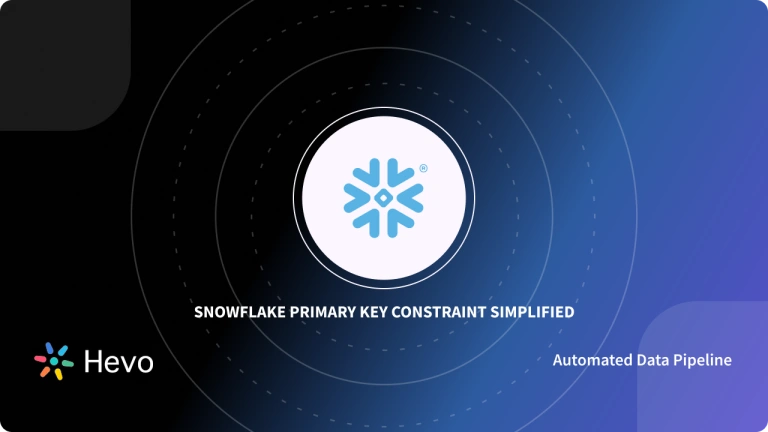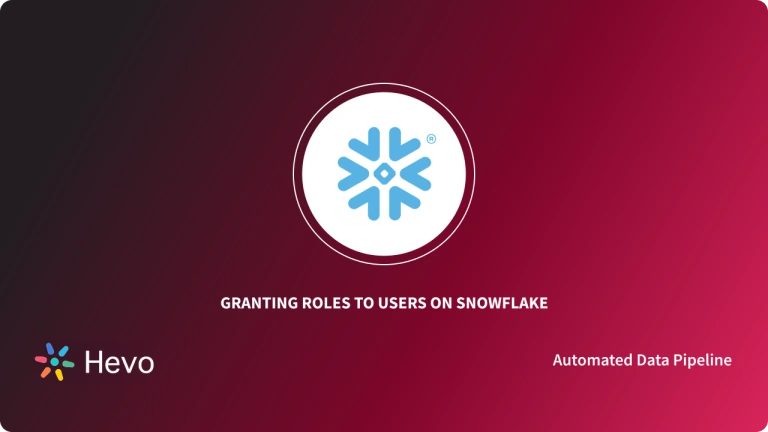As a Snowflake Data Engineer interpreting and understanding data is only the culmination of a long journey, which includes the transformation of raw data into fancy analytical dashboards. Systematically analyzing data requires a dedicated ecosystem called a data pipeline.
This is a set of technologies used to obtain, store, process, and query data in a specific environment. This article will explain who a Snowflake Data Engineer is, their scope of responsibilities, Developer skill sets, and Snowflake job description.
Table of Contents
Who is Snowflake Data Engineer?
- Snowflake Data Engineers develop algorithms for analyzing raw data sets and finding trends in data sets. In order to be successful in this role, you must have extensive experience with SQL Databases and multiple programming languages.
- However, a Snowflake Data Engineer must also possess communication skills to collaborate with business leaders to understand what the company wants to achieve from its vast datasets.
- Engineers design algorithms to facilitate access to raw data, but understanding an organization’s or client’s goals is necessary to accomplish these objectives. When working with data, it’s crucial to align business objectives, especially when dealing with large and complex datasets.
- Snowflake Data Engineers are also expected to know how to optimize the retrieval of data and how to develop dashboards, reports, and other visual representations. As part of their responsibilities, Snowflake Data Engineers also communicate data trends to business executives.
A fully managed No-code Data Pipeline platform like Hevo Data helps you integrate data from 150+ Data Sources (including 60+ Free Data Sources) to a destination of your choice, such as Snowflake, in real-time in an effortless manner. Check out why Hevo is the Best:
- Schema Management: Hevo takes away the tedious task of schema management & automatically detects the schema of incoming data and maps it to the destination schema.
- Incremental Data Load: Hevo allows the transfer of data that has been modified in real time. This ensures efficient utilization of bandwidth on both ends.
- Live Support: The Hevo team is available round the clock to extend exceptional customer support through chat, E-Mail, and support calls.
Categories of Snowflake Data Engineer Roles
Snowflake Data Engineers can be classified into three main roles, listed below:
- Generalist: Generalists tend to work on smaller teams or in smaller companies. In this setting, as one of the few people in the business with a “data-focused” role, Data Engineers wear many hats. Generalists are often responsible for managing and analyzing data at all stages. Since smaller businesses will not need to worry about engineering “for scale,” this is an ideal role for those looking to transition from data science to Data Engineering.
- Pipeline-centric: The pipeline-centric Snowflake Data Engineer works with the data scientists to help make the most of the data they collect. They are often found in midsize companies. The pipeline-centric Data Engineers must possess advanced computer science and distributed systems skills.
- Database-centric: In larger organizations, Data Engineers mainly deal with analytics Databases since managing data flow is a full-time job. As Database-centric Data Engineers, we develop schemas for tables within multiple Databases and work with data warehouses.
The Role And Responsibilities Of A Snowflake Data Engineer
A Snowflake Data Engineer designs, implements, and optimizes large-scale data solutions using the Snowflake Data Warehouse. His role involves ensuring data security, building efficient data storage systems, and working with cross-functional teams to meet business objectives. Specific duties include:
Data Security
- Implementing and managing data security measures, including setting up access controls, roles, and ensuring compliance with data protection regulations
Data Storage
- Design and implement scalable and efficient data storage solutions using Snowflake’s unique architecture. This includes the design of optimized, high-performance databases for structured and unstructured data.
SQL Optimization and Troubleshooting
- Write, optimize, and troubleshoot SQL queries to ensure data is stored and accessed efficiently, meeting both performance and business needs.
ETL Pipelines
- Develop and operate ETL (Extract, Transform, Load) pipelines within and external to the Snowflake data warehouse, ensuring smooth data flow and transformation.
Third-Party Integration
- Integrate Snowflake with various data sources and third-party tools, ensuring smooth data processing and reporting.
Collaboration
- Closely work with cross-functional teams, including data scientists, analysts, and other engineers, to develop and maintain enterprise-level data solutions.
Keeping Up-to-date
- Continuously keeping up to date with the latest Snowflake features, best practices, and industry developments to continually optimize system performance and scalability.
Database and Reporting Design
- Developing database designs that meet business intelligence and reporting needs, ensuring data models are optimized for analysis and reporting.
Skills and Expertise of a Snowflake Data Engineer
To be successful in this position, a Snowflake Data Engineer should possess a high degree of skill in:
Expertise in Data Warehousing and Cloud Architecture
- Deep understanding of principles in data warehousing and cloud architecture with principles of SQL optimization for building very efficient and scalable data systems.
Experience with Snowflake’s Features
- Familiarity with Snowflake’s distinctive features, including multi-cluster architecture and shareable data features.
SQL Optimization and Troubleshooting
- Excellent skills in writing and optimizing SQL queries with high levels of performance and accurate data in all systems.
Data Quality and Issue Resolution
- Ability to troubleshoot and resolve data quality issues on time, ensuring data integrity and reliability.
Communication and Collaboration
- Good communication skills are very important in working with both technical and non-technical teams to ensure that the data engineering requirements are well understood.
Knowledge of Industry Regulations
- Knowledge of industry regulations on data security and compliance is also important to ensure that the systems meet legal and organizational standards.
Data Engineer Skills
- Every specialist has specific skills based on the responsibilities they have. The skillset of a Snowflake Data Engineer can vary, nevertheless, they engage in three basic activities: engineering, data science, and Database/warehouse management.
Engineering Skills
Data analysis and big data systems such as Hadoop and Apache Hive are usually written in Java or Scala. For training and implementing machine learning models, Data Engineers use high-performance languages like Python, R, and Golang. The popularity and clarity of Python and R lang make them popular choices for data projects.
- Software architecture
- Java
- Scala
- Python
- R
- C/C#
- Golang
Data-Related Expertise
Together, Data Engineers and data scientists would work closely. In order to work effectively with data platforms, you need a deep understanding of data models, algorithms, and data transformation techniques. Engineers will be responsible for building ETL tools (extracting, transforming, and loading), storage, and analytics tools. It is therefore imperative that you have experience with current ETL and BI solutions.
Using Kafka or Hadoop for big data projects requires more specific expertise. Data Engineers need knowledge of machine learning libraries and artificial intelligence frameworks. These include TensorFlow, Spark, PyTorch, and MLPack.
- A solid understanding of data science concepts is required
- Data analysis expertise
- Working knowledge of ETL tools
- Knowledge of BI tools
- Experience with Big Data technologies such as Hadoop and Kafka
- Extensive experience with ML frameworks and libraries including TensorFlow, Spark, PyTorch, and MLPACK
Database/Warehouse
- When designing and building data storage, Data Engineers use specialized tools. These storage systems can be used to store structured and unstructured data for analysis, or they can plug into dedicated analytical interfaces.
- Most of the time, these are relational Databases, so knowing SQL for DB/queries is a must for Data Engineers.
- There are also a number of other instruments such as Redshift that can be used to create large distributed data storages (NoSQL), Cloud Data Warehouses, or implement managed data platforms.
- We noted above that the level of responsibility varies with the size of a team, the complexity of the project, the size of the platform, and the position of a senior engineer.
- The roles associated with data science and engineering can vary greatly between organizations.
Snowflake Data Engineer Basic Qualifications
Snowflake Data Engineers are required to have the following qualifications:
- Minimum of 1 year of experience designing and implementing a full-scale data warehouse solution based on Snowflake.
- A minimum of three years experience in developing production-ready data ingestion and processing pipelines using Java, Spark, Scala, Python.
- Experience with complex data warehouse solutions on Teradata, Oracle, or DB2 platforms with 2 years of hands-on experience
- Expertise and excellent proficiency with Snowflake internals and integration of Snowflake with other technologies for data processing and reporting.
- A highly effective communicator, both orally and in writing
- Problem-solving and architecting skills in cases of unclear requirements.
- A minimum of one year of experience architecting large-scale data solutions, performing architectural assessments, examining architectural alternatives, and choosing the best solution in collaboration with both IT and business stakeholders.
- Extensive experience with Talend, Informatica, and building data ingestion pipelines.
- Expertise with Amazon Web Services, Microsoft Azure and Google Cloud.
Conclusion
In this article, you learnt that Database designers lay the foundation as well as the architecture of a Database. In order to build a robust system, they assess multiple requirements and apply relevant Database techniques. Snowflake Data Engineers are expected to have extensive experience developing and implementing production-grade data solutions within the Snowflake Data Warehouse. Additionally, you should have experience with the design and implementation of large-scale data warehouses using Teradata, Oracle, or DB2 platforms, as well as knowledge of building production-scale data ingestion and processing pipelines using Java, Spark, Scala, and Python.
Companies have business data available in multiple sources, and it’s a tedious process to load data manually from data sources to Snowflake. Hevo Data is a No-code Data Pipeline that can help you transfer data from any data source to the desired Snowflake.
FAQs
1. What does a Snowflake Data Engineer do?
A Snowflake Data Engineer designs, implements, and optimizes data pipelines, storage solutions, and databases within Snowflake. They manage ETL processes, write and optimize SQL queries, ensure data security, and integrate Snowflake with third-party tools to support data-driven decision-making.
2. Is Snowflake a Data Warehouse or ETL?
Snowflake is primarily a cloud-based data warehouse that enables scalable data storage, processing, and analytics. While it supports ETL processes, it is not specifically an ETL tool but can integrate with ETL systems for data transformation and loading.
3. Is Snowflake built on AWS or Azure?
Snowflake is a cloud-agnostic data platform, meaning it can run on multiple cloud providers, including AWS, Azure, and Google Cloud. It leverages the infrastructure of these platforms but operates independently of any single cloud service.










